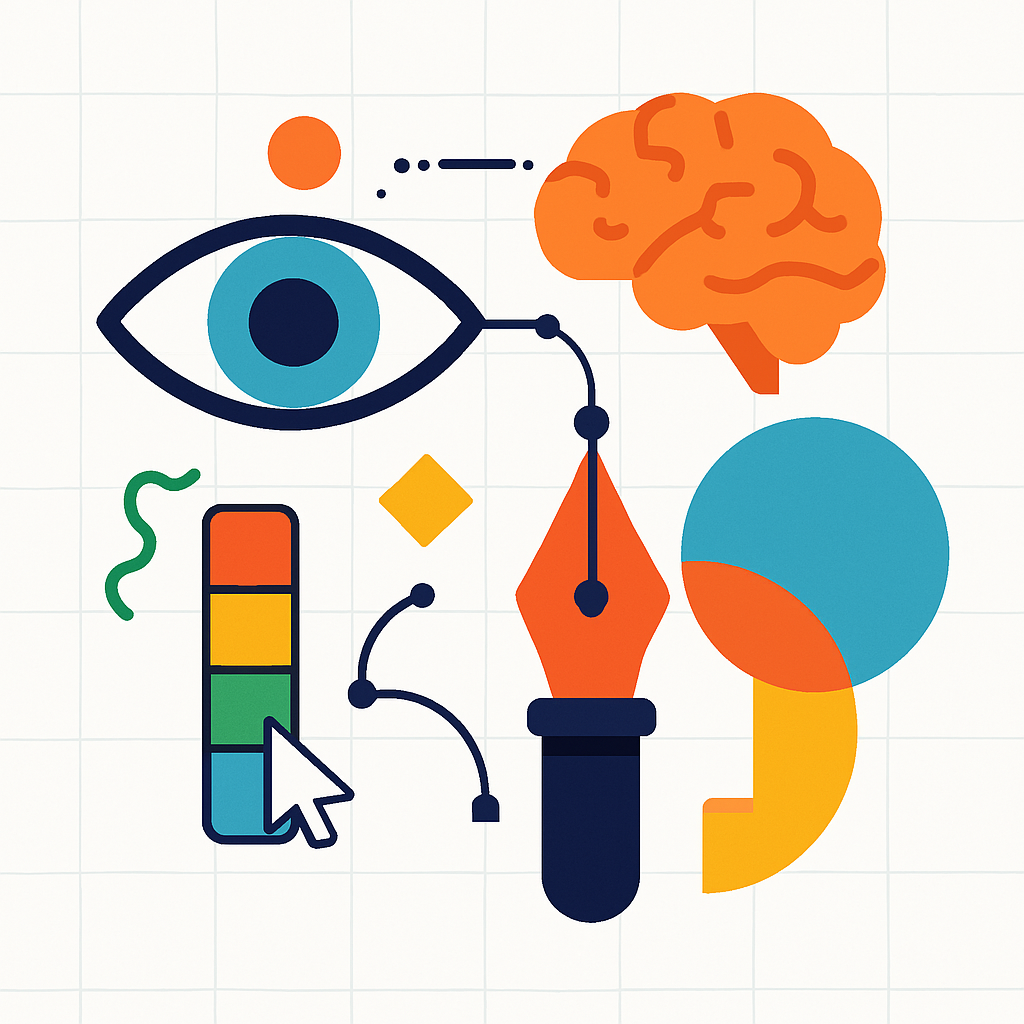Module 1: Introduction to Visual Intelligence

Welcome to the fascinating world of visual intelligence! This foundational module will embark on a journey to explore the core concepts of visual design, understanding its profound impact on how we perceive and interact with the world around us. We will delve into the historical roots of visual communication, unravel the science behind why our brains are wired to prioritize visuals, and establish a crucial understanding: design is a powerful form of communication, not mere decoration. By the end of this module, you will have a clearer perspective on the role of visual design in modern society and begin to develop the analytical skills necessary to deconstruct and appreciate the visual messages that constantly surround you.
What is Visual Design?
Visual design is the art and practice of planning and projecting ideas and experiences with visual and textual content. It encompasses a wide array of disciplines, including graphic design, typography, illustration, photography, and increasingly, user interface (UI) and user experience (UX) design. At its heart, visual design is about problem-solving. It seeks to communicate a specific message, evoke a particular emotion, or guide a user towards a desired action through the strategic arrangement of visual elements. These elements can include shapes, colors, lines, textures, typography, and images. The effectiveness of visual design lies not just in its aesthetic appeal, but in its ability to convey information clearly, efficiently, and memorably. It is a language that transcends cultural and linguistic barriers, speaking directly to our innate ability to process and interpret visual information.
Historical Context of Visual Communication
The practice of visual communication is as old as humanity itself. From the earliest cave paintings depicting hunting scenes and spiritual beliefs, to the intricate hieroglyphs of ancient Egypt that combined imagery and symbols to record history and religious doctrines, humans have always sought ways to communicate visually. The invention of writing systems marked a significant evolution, allowing for more complex and nuanced messages to be conveyed. The development of the printing press in the 15th century revolutionized visual communication by enabling the mass production of texts and images, making knowledge and information accessible to a wider audience. This era saw the rise of typography as a distinct design discipline. The Industrial Revolution further spurred the growth of visual design, with the advent of advertising and branding creating new demands for visually compelling communication. Throughout the 20th century, movements like Art Nouveau, Bauhaus (which we will explore in more detail later), Art Deco, and Swiss Design each contributed unique philosophies and stylistic approaches, shaping the landscape of modern visual design. The digital age has ushered in another transformative period, with the internet and digital devices creating unprecedented opportunities and challenges for visual communicators. Understanding this rich historical tapestry provides context and inspiration, revealing how enduring principles of visual communication continue to adapt and evolve in response to new technologies and societal needs.
Why Humans Process Visuals First
Our brains are extraordinarily adept at processing visual information. In fact, a significant portion of our neural capacity is dedicated to vision. Scientific research indicates that humans can process images up to 60,000 times faster than text, and that the vast majority (around 90%) of information transmitted to the brain is visual. This preference for visual stimuli is deeply rooted in our evolutionary history. For our ancestors, the ability to quickly spot a predator, identify edible plants, or interpret subtle social cues from body language was crucial for survival. This has resulted in a highly developed visual system that can rapidly identify patterns, detect motion, and interpret complex scenes with remarkable efficiency. When we encounter information, our eyes are naturally drawn to visual elements before we begin to read text. Images can convey emotion, context, and meaning almost instantaneously, creating an immediate impact that text alone often struggles to achieve. This is why visual storytelling is so powerful and why visual elements are so critical in user interface design, marketing, education, and virtually every field that involves communication. Recognizing this inherent human bias towards visual processing is fundamental for any designer seeking to create effective and engaging experiences.
Design as Communication, not Decoration
A common misconception is that design is primarily about making things look pretty – a superficial layer of aesthetic appeal added as an afterthought. However, true design, particularly in the context of visual communication, is fundamentally about conveying a message with purpose and clarity. While aesthetics play an important role in capturing attention and creating a positive impression, they must always serve the underlying communicative goal. Decoration, on the other hand, is often arbitrary and lacks a deeper functional purpose. Effective design is intentional. Every choice, from the selection of a color palette and typeface to the arrangement of elements on a page, should contribute to the overall message and the intended user experience. A beautifully designed website that is difficult to navigate or a visually stunning poster with illegible text fails in its primary objective: to communicate effectively. Therefore, designers must think like communicators first and artists second. They must understand their audience, define the message they want to convey, and then strategically employ visual principles to achieve that objective. This purpose-driven approach ensures that design is not merely an embellishment but a vital tool for conveying meaning, facilitating understanding, and driving action.